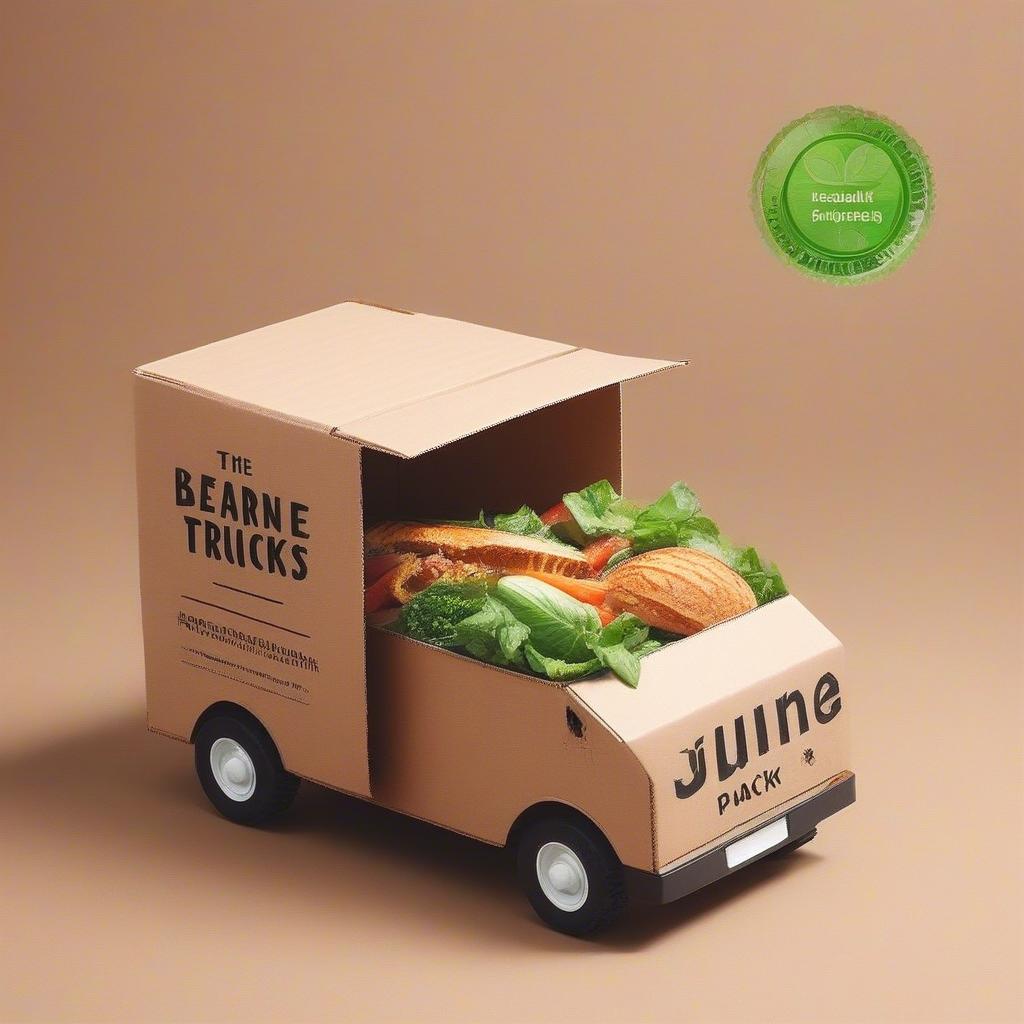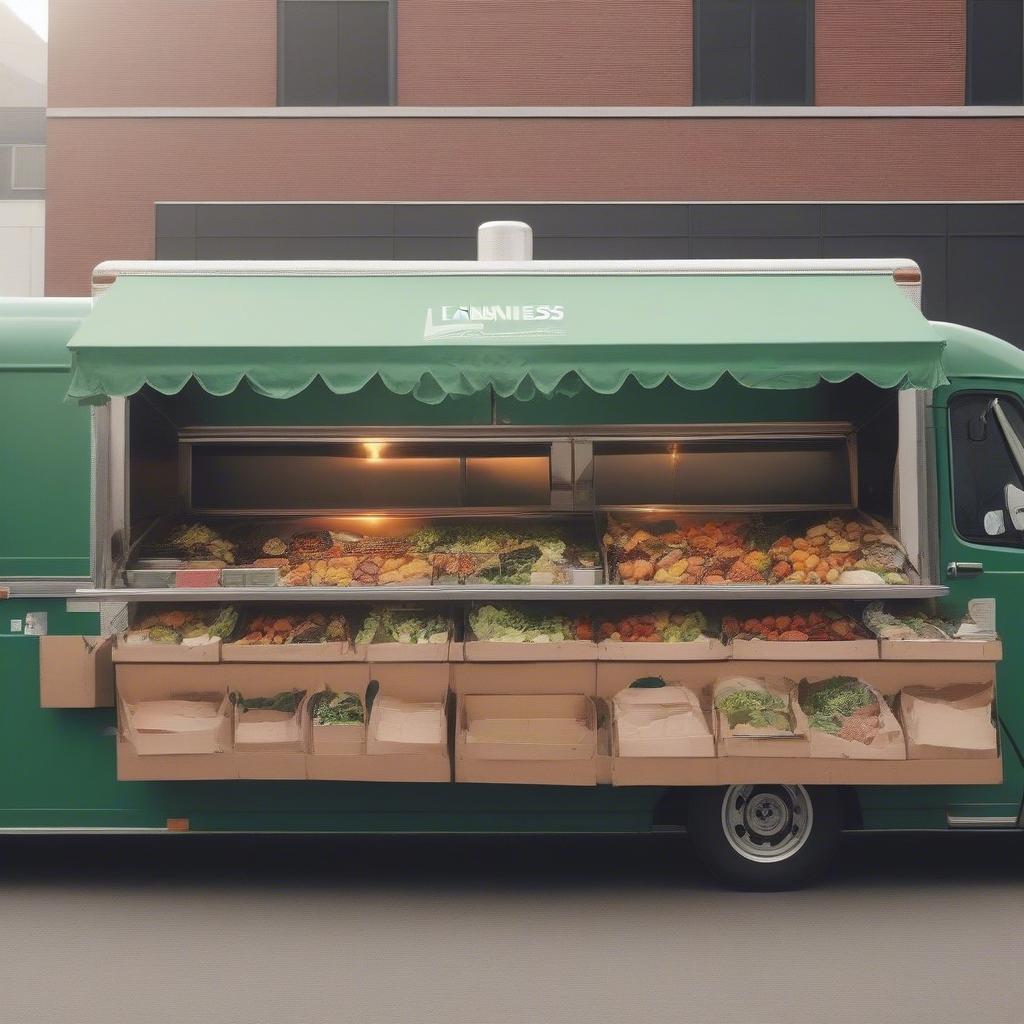
Okay, you’ve got a killer food truck, slinging out deliciousness on wheels. But how do you get those hungry crowds lining up? The secret ingredient? A robust social media strategy. It’s not enough to just park and hope people find you. You need to be where they are: online, scrolling, and ready to drool over your latest specials. This guide dives deep into the best platforms to boost your food truck promotion and dishes out actionable marketing tips to help you succeed.
Why Social Media is Crucial for Your Food Truck
Let’s face it, traditional advertising can be expensive and often misses the mark, especially for a mobile business like yours. Social media is your modern-day megaphone, offering a direct line to your target audience. Here’s why it’s a must-have:
- Cost-Effective Marketing: Compared to billboards or print ads, social media offers budget-friendly options, allowing you to reach a large audience without breaking the bank.
- Targeted Reach: You can zero in on specific demographics – people in your area who love food, are interested in your type of cuisine, or even follow local food blogs.
- Instant Engagement: Social media fosters two-way conversations. You can interact with your customers in real-time, respond to questions, and build a loyal following.
- Visual Appeal: Food is incredibly visual, and social media platforms are designed for sharing mouth-watering photos and videos, which can entice people to visit your truck.
- Increased Brand Awareness: Consistent posting and engagement can build your brand recognition and turn casual observers into dedicated customers.
- Real-Time Updates: Easily announce your location, daily specials, or any last-minute changes to your schedule.
- Customer Feedback: Use social media to gather feedback and continuously improve your menu and services.
The Top Social Media Platforms for Food Trucks
Not all social media platforms are created equal. Some are better suited for visual content, while others excel at community building. Let’s explore the best options for your food truck:
1. Instagram: The Visual Feast
What It Is: Instagram is a visual platform perfect for showcasing the art of your food. It’s about high-quality photos and videos that capture the essence of your dishes.
Why It’s Great for Food Trucks:
- Visually-Driven: People eat with their eyes first, and Instagram lets you showcase your food’s beautiful presentation, enticing them to come and taste it.
- Hashtag Power: Use relevant hashtags like #foodtruck, #foodtrucklife, #foodphotography, and #[yourcity]food to reach a wider audience searching for food options.
- Instagram Stories: Share behind-the-scenes footage, daily specials, and quick updates using Stories, which disappear after 24 hours, creating a sense of urgency.
- Location Tagging: Always tag your location to let people know where they can find you.
- Instagram Reels: Create short, engaging videos that show your food preparation process, team members, or customer testimonials.
- Live Streaming: Host live Q&A sessions or cooking demos to engage your audience in real-time.
Actionable Instagram Tips for Food Trucks:
- Invest in Good Photography: Use natural light and shoot from various angles.
- Post Regularly: Aim for at least one post per day to keep your brand top-of-mind.
- Use Stories Consistently: Share daily updates, special announcements, and interactive polls.
- Engage with Your Audience: Respond to comments and direct messages promptly.
- Collaborate with Local Influencers: Partner with food bloggers or local personalities for increased visibility.
Run Contests and Giveaways: Incentivize engagement and build your following.
- Example: Run a “Tag a Friend” giveaway, where participants must tag friends in the comments to enter to win a free meal.
- Use Instagram Analytics: Track what content performs best and adjust your strategy accordingly.
2. Facebook: The Community Builder
What It Is: Facebook is a versatile platform for sharing content, building community, and engaging with customers.
Why It’s Great for Food Trucks:
- Detailed Information: Easily share your menu, hours of operation, contact information, and location details.
- Event Creation: Create Facebook events to announce your participation in local festivals, farmers’ markets, or special events.
- Community Building: Foster a community by encouraging interaction, asking questions, and sharing customer photos.
- Targeted Ads: Facebook Ads allow you to reach specific demographics based on location, interests, and demographics.
- Reviews and Recommendations: Customers can leave reviews and recommendations, which builds trust and credibility.
- Facebook Groups: Join relevant local groups to promote your truck to a targeted audience.
Actionable Facebook Tips for Food Trucks:
- Complete Your Profile: Fill out all the necessary information, including hours, menu, and address.
- Post Regularly: Share a mix of photos, videos, text updates, and customer testimonials.
- Respond to Comments: Engage with your audience by responding to questions and comments promptly.
- Use Facebook Events: Create events to let people know where you will be and when.
- Run Targeted Ads: Use Facebook Ads to reach specific demographics based on your location and customer base.
- Run Contests and Promotions: Encourage engagement by offering exclusive deals and discounts.
- Utilize Facebook Insights: Track your page performance and adapt your approach.
- Share customer photos: Encourage customers to tag your food truck in their posts and then reshare those on your page.
3. TikTok: The Viral Video Hub
What It Is: TikTok is a short-form video platform known for its creative, engaging, and often viral content.
Why It’s Great for Food Trucks:
- Video-Centric Platform: TikTok is all about short, eye-catching videos that grab attention.
- Viral Potential: The algorithm can help your videos reach a large audience, even if you have a small following.
- Showcase Food in Motion: Highlight your cooking process, the presentation of your food, and behind-the-scenes action.
- Trending Sounds: Use popular sounds and music to make your videos more engaging and discoverable.
- Engage with Trends: Participate in relevant trends and challenges to increase visibility.
- Connect with a Younger Audience: If you want to target younger demographics, TikTok is a must-have platform.
Actionable TikTok Tips for Food Trucks:
- Use Vertical Video: TikTok videos are displayed vertically, so shoot in that format.
- Keep Videos Short and Sweet: Short videos of 15-60 seconds work best.
- Use Trending Sounds and Music: Incorporate popular audio to increase discoverability.
- Be Authentic: Show your brand’s personality and what makes your food unique.
- Share Behind-the-Scenes Content: Show the process of prepping food, or a glimpse at your team.
- Engage with Comments: Respond to comments and questions promptly.
- Use Relevant Hashtags: Include relevant hashtags like #foodtruck, #foodtok, #cooking, and #asmrfood.
- Run a contest: Ask users to use your sound on their video while showcasing your food truck to win a free meal.
4. Twitter: The Real-Time Update Platform
What It Is: Twitter is a platform for sharing short, real-time updates and engaging in conversations.
Why It’s Great for Food Trucks:
- Quick Updates: Share your location, daily specials, and any changes in your schedule instantly.
- Community Engagement: Participate in local conversations and build relationships with your community.
- Customer Service: Quickly address customer questions or concerns publicly.
- Hashtag Usage: Use relevant hashtags like #[yourcity]food or #foodtruck to reach a targeted audience.
- Monitoring Mentions: Keep an eye on mentions of your truck and engage with anyone talking about you.
- Connect with Local Businesses: Build partnerships with local stores or events.
Actionable Twitter Tips for Food Trucks:
- Tweet Regularly: Share updates about your location, menu, and specials.
- Use Relevant Hashtags: Include hashtags to increase the discoverability of your tweets.
- Engage with Followers: Respond to mentions and questions promptly.
- Use Photos and Videos: Make your tweets more engaging with visuals.
- Run Polls and Quizzes: Encourage engagement by asking questions and running polls.
- Retweet Customer Posts: Reshare posts from happy customers.
- Follow Local Businesses: Expand your network and build relationships.
5. Pinterest: The Visual Search Engine
What It Is: Pinterest is a visual discovery engine where users find ideas and inspiration, including food.
Why It’s Great for Food Trucks:
- Visual Discovery: Users save visually appealing content on boards, so your food photos can get discovered by new customers.
- Recipe Inspiration: If your menu features unique or unusual dishes, Pinterest is a great place to showcase them.
- Drive Website Traffic: Direct users to your website or menu pages by linking to them on your pins.
- Targeted Audience: Reach an audience interested in food and recipes.
- Long-Term Visibility: Your pins can continue to be discovered over time, providing ongoing traffic to your content.
Actionable Pinterest Tips for Food Trucks:
- Create High-Quality Images: Use bright and visually appealing photos of your food.
- Organize Your Boards: Create boards based on menu items or specific themes.
- Use Keyword-Rich Descriptions: Include relevant keywords in your pin descriptions to enhance searchability.
- Link to Your Website or Menu: Make it easy for users to find more information about your food truck.
- Share Pins Regularly: Pin content to keep your profile active.
- Engage with Others’ Content: Repin content from other food-related profiles to broaden your reach.
Crafting an Effective Social Media Strategy
Using these platforms effectively requires a well-planned strategy. Here’s how to create one:
- Define Your Goals: What do you hope to achieve through social media? More customers? Increased brand awareness? Define your goals.
- Know Your Audience: Who are you trying to reach? Understanding your target audience will inform your content and platform choices.
- Choose the Right Platforms: Focus on a few platforms that align with your goals and audience.
- Develop a Content Calendar: Plan your posts in advance to maintain consistency.
- Create Engaging Content: Use high-quality images, compelling videos, and interesting text updates.
- Engage with Your Audience: Respond to comments, questions, and messages promptly.
- Analyze Your Results: Use platform analytics to track performance and make necessary adjustments.
- Be Consistent: Post regularly to maintain your presence and engage with your audience.
Example Social Media Content Calendar
| Day | Platform | Content Type | Description |
|---|---|---|---|
| Monday | Photo | Close-up shot of your most popular dish with enticing captions and hashtags #foodtruck #[city]food #foodie | |
| Monday | Text Update | Announcement of the weekly specials | |
| Tuesday | TikTok | Short Video | Fast-motion video of food preparation |
| Wednesday | Instagram Stories | Interactive Poll | Ask followers for their favorite menu items. |
| Wednesday | Event Creation | Announce location for Friday | |
| Thursday | Text Update | Share your location and business hours | |
| Friday | Story + location Tag | A behind-the-scenes look of the hustle during the busy lunch service with a location tag | |
| Friday | TikTok | Trending Sound Video | A video showcasing customers enjoying their meals with a trending sound |
| Saturday | Customer Photo | Re-share customer photo or quote with permission | |
| Sunday | Image | Share a high quality image of an entire spread of food to be saved for later |
The Power of Local SEO for Your Food Truck
While social media is crucial, don’t neglect local search engine optimization (SEO). This ensures that your truck appears in search results when people search for food options in your area.
Key Local SEO Tips for Food Trucks:
- Google My Business Profile: Claim and optimize your Google My Business listing with accurate information, photos, and hours.
- Local Keywords: Use local keywords (e.g., “food truck [your city]”) in your website content and social media posts.
- Consistent NAP: Ensure your name, address, and phone number (NAP) are consistent across all online platforms.
- Customer Reviews: Encourage customers to leave reviews on your Google My Business page and other relevant review sites.
- Local Citations: Ensure your truck is listed on local directories and websites.
- Website Optimization: If you have a website, make sure it is mobile-friendly and optimized for local search.
Learn Business: Your Partner in Food Truck Success
Running a food truck involves more than just delicious food; it requires smart business practices. Learn Business understands this and is here to support you by providing the guidance, templates, and resources you need to thrive.
How Learn Business Can Help Your Food Truck:
- Customized Templates: Access a library of templates tailored to food trucks, including marketing plans, social media calendars, and financial trackers.
- Expert Guidance: Connect with experienced business professionals for advice and support.
- Time-Saving Tools: Utilize tools and resources to streamline your operations.
- Ongoing Support: Receive continuous support and education to stay ahead of the curve.
- Business Plan Template: Use learn business’ business plan template to set goals, plan your finances and more.
- Social media Templates: You can use Learn Business social media templates to plan and organize your social media presence.
Conclusion
In today’s digital age, social media is not just an option for your food truck; it’s a necessity. By strategically utilizing platforms like Instagram, Facebook, TikTok, Twitter, and Pinterest, you can effectively reach your target audience, build a loyal following, and drive your business forward. Remember, consistency, engagement, and a well-thought-out plan are key to success. Combine these with local SEO and the support from platforms like Learn Business, and you’ll have the ingredients for long-term growth and a thriving mobile food business.



Leave a Reply